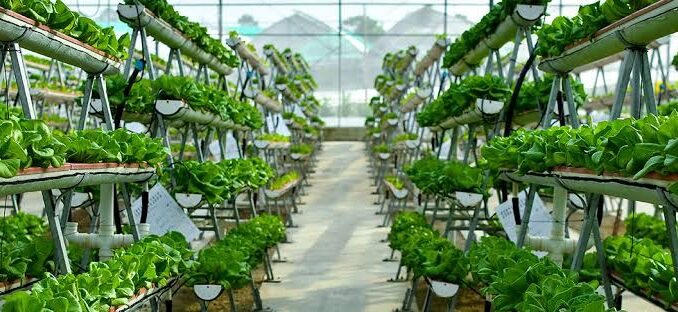CRI Report has released a report titled “Indoor Farming Technology Market – Analysis of Market Size, Share & Trends for 2014 – 2020 and Forecasts to 2030” which is anticipated to reach USD 31.73 billion by 2030. According to a study by CRI Report, the market is anticipated to portray a CAGR of 9.7% between 2020 and 2030. According to the report, the rise in continuous demand for food supply, growth in human population in urban areas, cost-effective way of farming, protection from weather-related changes, reduction in soil-borne insects, herbicides and pesticides difficulties in crop production, and potential for continuous crop production across the globe are all major drivers of the worldwide Indoor farming market.
The market report on global Indoor Farming Technology Market includes in-depth insights as:
- The estimated value of the market was USD 14.95 billion in the year 2020.
- Global Indoor Farming Technology in APAC held the largest market share in the year 2020.
- Global Indoor Farming Technology market is divided by crop type into Fruits & vegetables, Herbs & Microgreens, Flowers & Ornamentals, and Others.
- Global Indoor Farming Technology market is segmented by growing system into Hydroponics, Aeroponics, Aquaponics, Soil-based and Hybrid.
- Key players are likely to focus on product innovations and expansion through mergers to retain their positions in developed markets.
“Changing Due to a lack of land for farming, indoor farming is extensively performed in metropolitan areas. Indoor farming has been more popular in recent years as the technology of farming sensors, monitoring, and regulating systems for all aspects of agriculture has advanced. In the indoor farming sector, reducing the usage of herbicides and pesticides in crop or plant cultivation is projected to gain appeal. Indoor farming appears to be more appealing because it allows farmers to produce more products with fewer resources.”, said a lead analyst at CRI Report.
Indoor farming technology is a means of using various technologies to grow foods and plants within the house. This method uses artificial lighting to produce plants with increased nutrients, and it incorporates soil-based, aeroponics, aquaponics, and hybrid technologies. Indoor farming technology can be employed in the home as well as in the business sector on small and large scales.
Global Indoor Farming Technology market is segmented by growing system into Hydroponics, Aeroponics, Aquaponics, Soil-based and Hybrid. Aeroponics segment held the largest market share in the year 2020. Aeroponics is a method of growing plants in a misty atmosphere without the use of traditional media like soil. Instead of dirt, the plant roots are placed in containers containing plant nutrients. These containers are perfect for oxygenation and wetness, and they enhance the plant’s absorption of nutrients, allowing for faster growth and cultivation. The seeds are sown on a wired mesh, and the plant pots are stacked on top of one another, making it lightweight and portable.
Key Players in the Market
- Some of the key players operating in the global Indoor Farming Technology Market are General Hydroponics, Agrilution GmbH, Everlight Electronics Co., Ltd, Hydrodynamics International, Inc., Illumitex, Inc., LumiGrow, Inc., Netafim Ltd., Philips Lighting Company, Richel Group SA, and Other Prominent Players
Get Valuable Insights into Global Indoor Farming Technology Market
In the new report, CRI Report thrives to present an unbiased analysis of the global Indoor Farming Technology Market that covers the historical demand data as well as the forecast figures for the period, i.e., 2021-2030. The study includes compelling insights into growth that is witnessed in the market. Global Indoor Farming Technology market is divided by crop type into Fruits & vegetables, Herbs & Microgreens, Flowers & Ornamentals, and Others. Global Indoor Farming Technology market is segmented by growing system into Hydroponics, Aeroponics, Aquaponics, Soil-based and Hybrid. Geographically, the market is segmented into North America, Latin America, Europe, Asia Pacific, and Middle East, and Africa.

